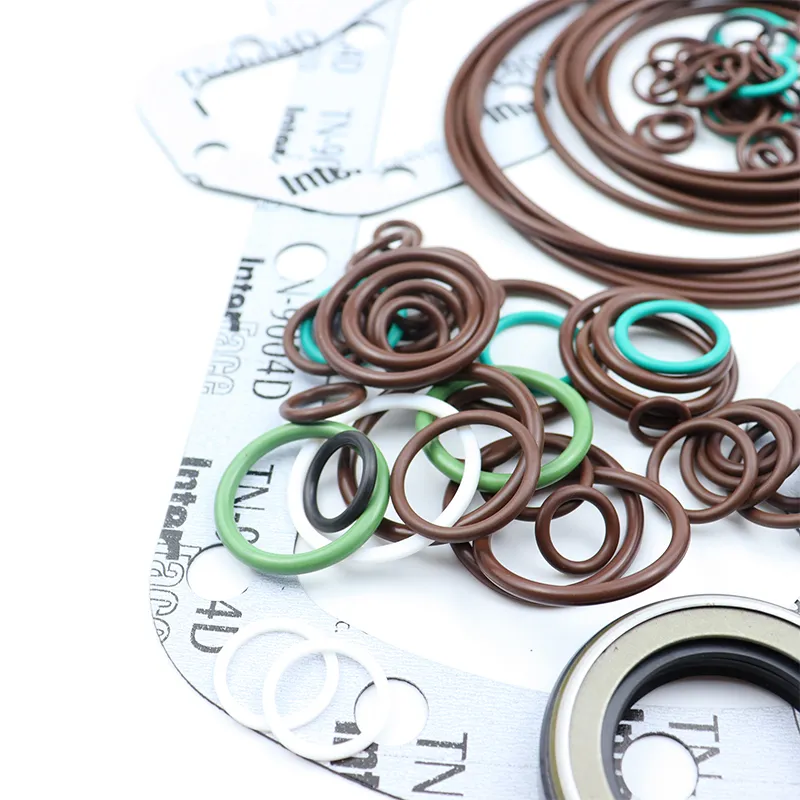Dec . 10, 2024 12:35 Back to list
Choosing Hub Seals by Size for Optimal Performance and Compatibility
Understanding Hub Seals by Size A Comprehensive Guide
When it comes to maintaining and operating vehicles, machinery, and various mechanical systems, the importance of hub seals cannot be underestimated. Hub seals play a crucial role in preventing contamination, retaining lubricants, and ensuring overall performance of rotating components. This article aims to delve into the significance of hub seals and how their sizes affect functionality and fit.
What are Hub Seals?
Hub seals, often referred to as axle seals or wheel seals, are components used to seal the space between rotating parts and stationary parts within a mechanical assembly. Their primary function is to prevent the ingress of dirt, water, and other contaminants while retaining oil or grease within the hub. This is vital because any contamination can lead to premature wear, overheating, and ultimately, failure of mechanical systems.
The Importance of Size in Hub Seals
The size of a hub seal is one of the critical factors that influence its effectiveness. An improperly sized seal can lead to a multitude of issues, including leaks, reduced lubrication, and exposure to harmful substances. Therefore, selecting the right size is paramount, and several dimensions need to be considered
1. Inner Diameter This is the diameter that fits around the rotating shaft. A precise fit is essential to reduce the chance of leakage. If the inner diameter is too large, it may allow contaminants to enter the hub, while too small may cause fitting issues that lead to wear and tear.
2. Outer Diameter The outer diameter must match the housing in which the seal is installed. If the outer diameter is too small, the seal may become dislodged or fail to create a complete seal. Conversely, an oversized seal can lead to installation difficulties.
3. Thickness The thickness of the seal affects how well it sits within the housing. A thicker seal can provide better support but may also require more force for installation, while a thinner seal might not provide adequate pressure to prevent leaks.
4. Lip Design Some seals have a single lip, while others feature multiple lips. The design influences both the sealing performance and the ability of the seal to accommodate shaft movements.
hub seals by size

How to Choose the Right Size Hub Seal
Choosing the right size hub seal involves careful measurement and consideration of several factors
- Measure the Shaft Begin by measuring the shaft diameter where the seal will be installed. This is critical for determining the inner diameter required.
- Check the Housing Dimensions Measure the recess where the seal will be seated to ascertain the correct outer diameter.
- Consider Operating Conditions Variations in temperature, speed, and the type of lubricant used will impact the performance of the seal. Understanding these conditions will help in selecting the appropriate material and design.
- Consult Manufacturer Specifications Many manufacturers will provide detailed specifications for hub seals, including fitting charts, which can guide users in their selection process.
Maintenance and Replacement
Regular maintenance can extend the life of hub seals. Inspecting seals for wear, cracks, or deformation during routine servicing can prevent more severe problems down the road. If leaks are detected or the seals show signs of damage, timely replacement is crucial. When replacing hub seals, always ensure to choose the correct size to maintain optimal performance.
Conclusion
In conclusion, the size of hub seals is a pivotal factor that can significantly affect the reliability and efficiency of mechanical systems. By understanding the different dimensions and how they impact functionality, operators and maintenance personnel can make informed decisions that promote better performance and longevity of the equipment. Proper selection and installation of hub seals, based on their size, are key to ensuring a well-functioning mechanical assembly that stands the test of time.
-
TCN Oil Seal Metal Ring Reinforcement for Heavy Machinery
NewsJul.25,2025
-
Rotary Lip Seal Spring-Loaded Design for High-Speed Applications
NewsJul.25,2025
-
Hydraulic Cylinder Seals Polyurethane Material for High-Impact Jobs
NewsJul.25,2025
-
High Pressure Oil Seal Polyurethane Coating Wear Resistance
NewsJul.25,2025
-
Dust Proof Seal Double Lip Design for Construction Equipment
NewsJul.25,2025
-
Hub Seal Polyurethane Wear Resistance in Agricultural Vehicles
NewsJul.25,2025
-
The Trans-formative Journey of Wheel Hub Oil Seals
NewsJun.06,2025
Products categories
















